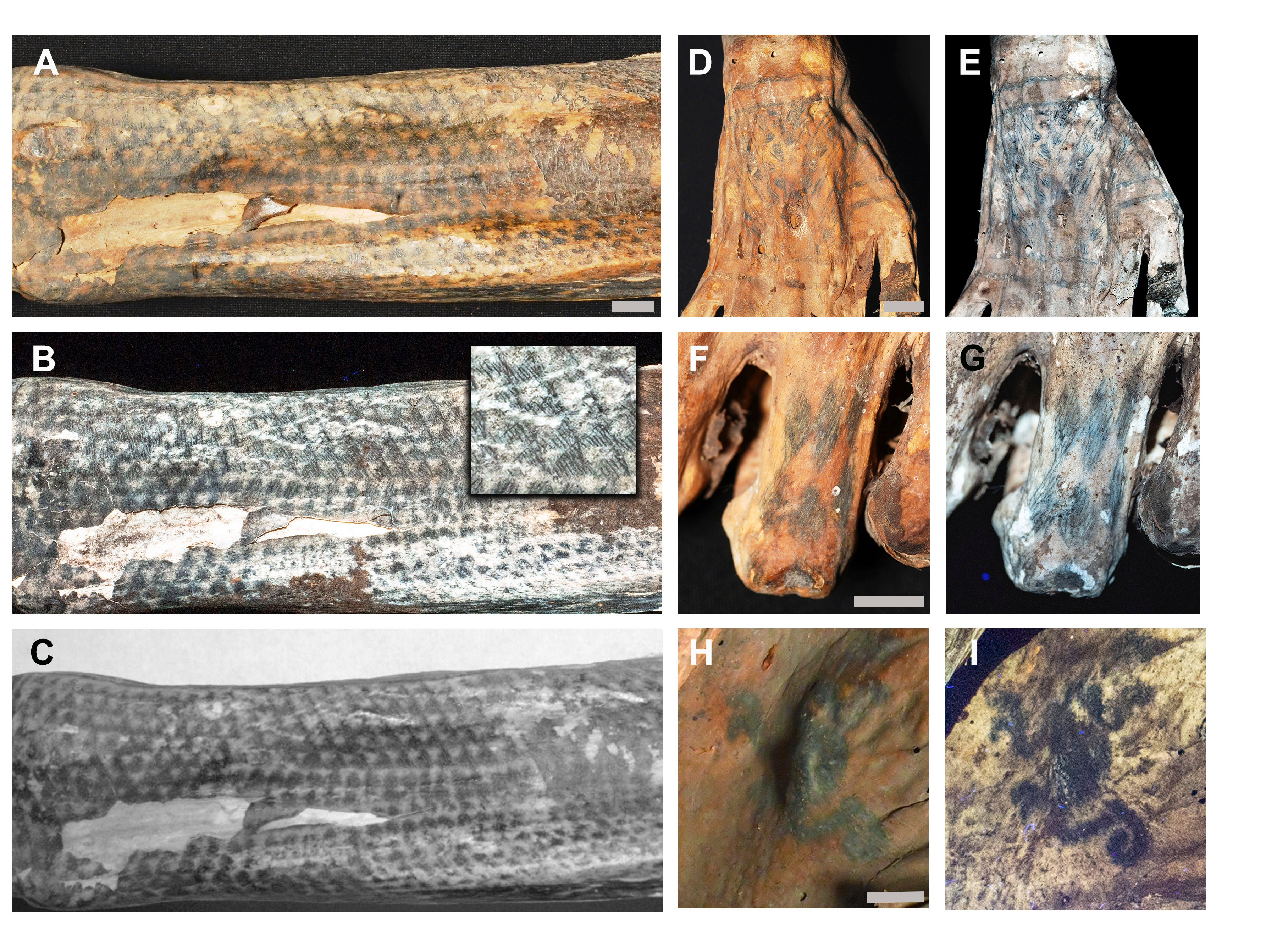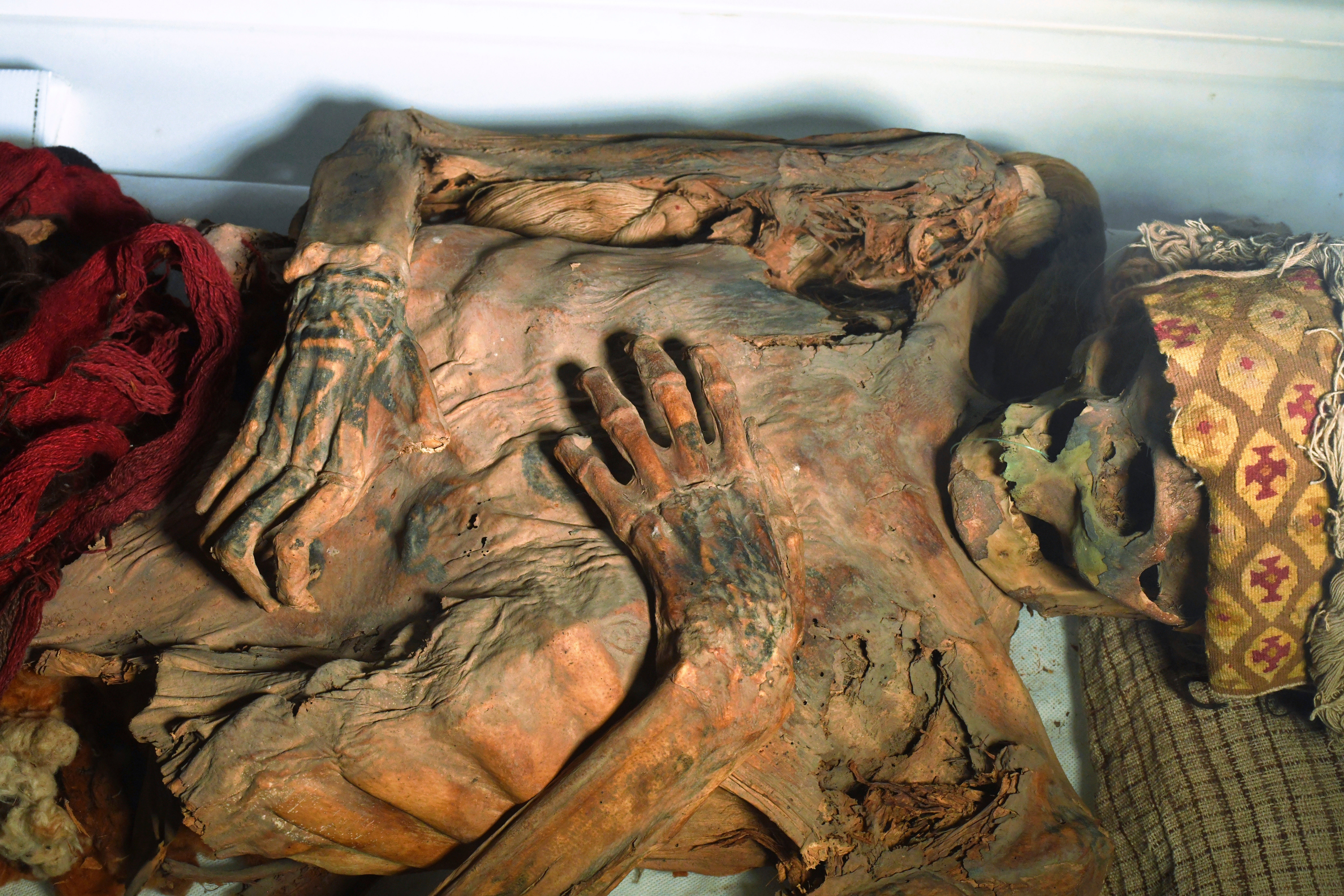
A new study is looking into the mystery of how 5,000 year-old-mummies were tattoed.
Researchers are using lasers to uncover highly intricate designs of ancient tattoos on the mummies from Peru.
It is not clear how the tattoos were created, but they are “of a quality that stands up against the really good electric tattooing of today,” said Aaron Deter-Wolf, an expert in pre-Columbian tattoos and an archaeologist at the Tennessee Division of Archaeology, who was not involved in the research.
The preserved skin of the mummies and the black tattoo ink used show a stark contrast — revealing fine details in tattoos dating to around 1250 A.D. that aren’t visible to the naked eye, said study co-author Michael Pittman, an archaeologist at the Chinese University of Hong Kong.
The researchers examined around 100 mummies from coastal Peru’s Chancay culture – a civilization that flourished before the Inca empire and the arrival of Europeans.
All the individuals had some form of tattoos on the back of their hands, knuckles, forearms or other body parts. The study focused on four individuals with “exceptional tattoos" — designs of geometric shapes such as triangles and diamonds, said Pittman.

Results were published Monday in the journal Proceedings of the National Academy of Sciences.
Using lasers that make skin faintly glow, “we basically turn skin into a light bulb,” said co-author Tom Kaye of the nonprofit Foundation for Scientific Advancement in Sierra Vista, Arizona.
The findings were “helpful to learn about new non-destructive technologies that can help us study and document sensitive archaeological materials,” such as mummies, said Deter-Wolf.
The oldest known tattoos were found on remains of a Neolithic man who lived in the Italian Alps around 3,000 B.C. Many mummies from ancient Egypt also have tattoos, as do remains from cultures around the world.

Throughout history, tattoos have been used in many ways -- to mark cultural or individual identity, life events or social status, or to “ward off maladies or help enhance relationships with spirits or deities,” said Lars Krutak, an archaeologist at the Museum of International Folk Art in Santa Fe, New Mexico, who was not involved in the research.
While designs on pottery, textiles and stonework are more commonly preserved and studied by researchers, “when ancient tattoos are available to us, they give exciting insights into forms of figurative and abstract art that we aren’t otherwise able to access,” said Bournemouth University archaeologist Martin Smith, who was not part of the study.







